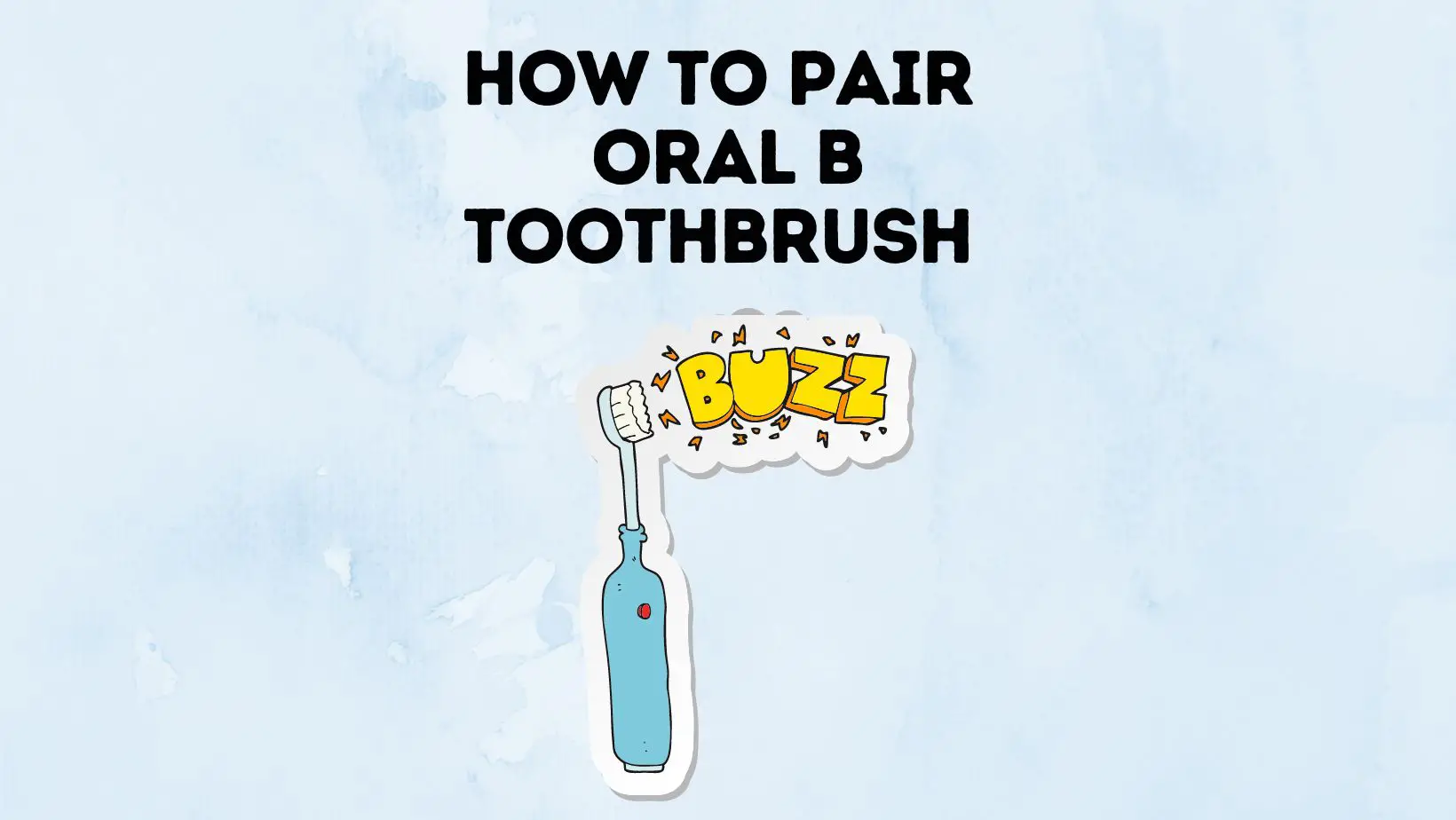
Oral hygiene plays a crucial role in maintaining a healthy mouth and preventing oral health issues. One popular brand of toothbrushes is Oral-B, known for its advanced features and effectiveness in cleaning teeth. Pairing an Oral-B toothbrush with the right brushing technique can help you achieve optimal oral health. In this guide, we will discuss how to pair an Oral-B toothbrush with proper brushing techniques for maximum benefits.
Table of Contents
To pair an Oral-B toothbrush effectively, follow these steps:
- Select the right Oral-B toothbrush: Oral-B offers a range of toothbrush models with various features. Consider your specific needs, such as sensitive teeth, gum health, or whitening, and choose a toothbrush that suits your requirements.
- Choose the appropriate brush head: Oral-B toothbrushes have interchangeable brush heads. Select a brush head that is compatible with your toothbrush model and addresses your oral health needs. Options include CrossAction, Sensitive, ProWhite, and more.
- Wet the brush head: Before brushing, wet the brush head with water. This helps to soften the bristles and create a better brushing experience.
- Apply toothpaste: Squeeze a pea-sized amount of toothpaste onto the brush bristles. Use a fluoride toothpaste recommended by your dentist for effective cavity protection.
- Position the toothbrush: Hold the toothbrush at a 45-degree angle, pointing towards the gum line. This allows the bristles to reach both the teeth and the gum line.
- Brush in small, circular motions: Move the toothbrush in gentle, circular motions, covering all tooth surfaces. Pay special attention to the front, back, and chewing surfaces of each tooth.
- Take your time: Brush your teeth for a minimum of two minutes, dedicating equal time to different sections of your mouth. Consider using a timer or an electric toothbrush with a built-in timer for accurate brushing duration.
- Clean the tongue: After brushing your teeth, gently brush your tongue to remove bacteria and freshen your breath.
- Rinse your mouth and the brush head: Rinse your mouth thoroughly with water, ensuring you remove all toothpaste. Rinse the brush head as well to remove any remaining toothpaste residue.
- Store the toothbrush properly: After use, rinse the toothbrush under running water and allow it to air dry. Avoid covering the brush head, as this can promote bacterial growth. Store it upright in a clean, well-ventilated area.
- Replace the brush head regularly: Over time, the bristles on the brush head wear out, reducing their effectiveness. Replace the brush head every three to four months, or sooner if the bristles become frayed or damaged.
By following these steps and maintaining a consistent oral hygiene routine, you can effectively pair your Oral-B toothbrush with proper brushing techniques for optimal oral health. Remember to visit your dentist regularly for check-ups and professional cleanings.

Oral B Toothbrush Common Problems and Fixes
Common problems with Oral-B toothbrushes can occur, but most of them can be easily resolved. Here are some common issues and their possible fixes:
- Battery not charging:
- Ensure that the charging base is properly plugged into a functioning power outlet.
- Check the charging indicator light on the brush handle. If it doesn’t light up, try using a different power outlet or a different charging cable.
- If the issue persists, contact Oral-B customer support for further assistance.
- Weak or no vibration:
- Make sure the toothbrush is properly connected to the brush head. Sometimes, the connection may become loose during use.
- Check the battery level. If it is low, recharge the toothbrush.
- If the problem continues, remove the brush head and clean the metal contacts on both the toothbrush handle and the brush head. Reattach the brush head firmly.
- Brush head not rotating:
- Ensure that the brush head is securely attached to the toothbrush handle. If it feels loose, remove it and reattach it properly.
- Clean the metal contacts on both the toothbrush handle and the brush head to ensure proper electrical contact.
- If the issue persists, try using a new brush head. Over time, the bristles can become worn out and less effective.
- Stuck or sticky mode button:
- If the mode button is stuck or difficult to press, gently clean around the button using a soft cloth or a toothpick.
- Avoid using excessive force or harsh cleaning agents that could damage the button.
- If the problem persists, contact Oral-B customer support for further guidance.
- Water leakage:
- Check the rubber seal around the brush head attachment area. If it is damaged or worn out, it may cause water leakage. Replace the seal if necessary.
- Ensure that the brush head is properly attached and that there are no obstructions or debris interfering with the attachment mechanism.
- Avoid submerging the toothbrush handle in water or using it in extremely wet conditions.
If you encounter any persistent problems with your Oral-B toothbrush, it is recommended to consult the user manual or contact Oral-B customer support for specific troubleshooting steps or warranty assistance.
Summary:
Pairing an Oral-B toothbrush with proper brushing techniques is essential for effective oral hygiene. Start by selecting an Oral-B toothbrush that suits your needs, considering factors like bristle type, size, and additional features.
Once you have the right toothbrush, focus on using the proper brushing technique, including holding the toothbrush at a 45-degree angle, making gentle circular motions, and covering all tooth surfaces. Additionally, make sure to brush for the recommended two minutes, twice a day, and replace the brush head every three to four months. By following these guidelines, you can optimize your oral health and make the most of your Oral-B toothbrush.

Hi, This is Lyn, I suffer from dental sensitivity for a very long time. PowerToothpaste.com is where I share my views of various toothpaste brands, along with tips on how to use toothpaste and what to look for when purchasing.
